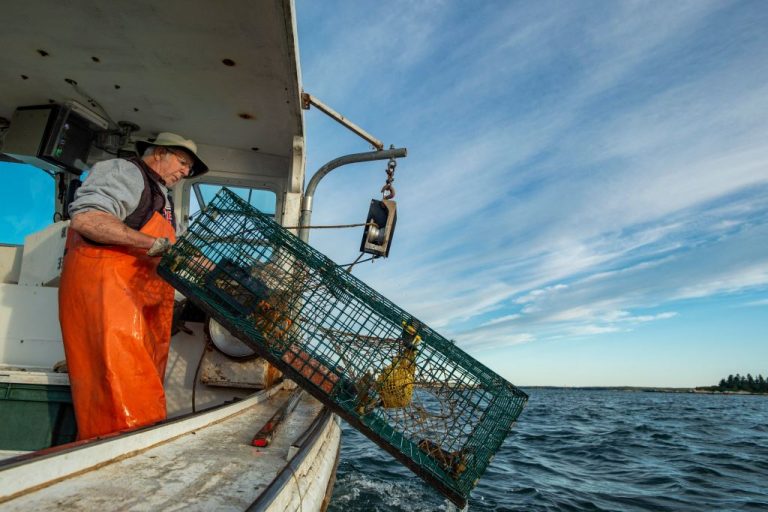A new technology that enables lobster harvesters to fish with minimal rope usage is generating excitement among conservationists. They believe it can help prevent whale entanglements, a growing issue along the northeastern coast of America. However, lobstermen have concerns that this initiative may threaten their livelihoods and disrupt their way of life.
The push for ropeless fishing stems from the alarming damage inflicted on the population of the endangered North Atlantic Right Whale. With only 350 individuals remaining worldwide, including a mere 70 breeding females, the stakes are high. Since the beginning of 2023, four right whales along the coast have been injured in fishing lines, and government data shows that nine have died since 2017 due to various human-related causes, including entanglement in fishing ropes.
Christy Hudak, a researcher at the Center for Coastal Studies, explained the severity of the situation: “They are suffering from multiple human-related causes, and that includes ship strikes, entanglement in fishing rope, or any type of line,” Reuters reported. When whales accidentally encounter the ropes, they often become entangled around their bodies or heads, leading to persistent entanglements that can cut into their flesh, cause emaciation, or even result in death.
READ MORE:
- Beluga Whale, Believed to Be a Russian Spy, Surfaces in Sweden
- Australian Rescuers Rush to Save 230 Pilot Whales Stranded in Tasmania, Half Feared Dead
- Modern-day ‘Moby Dick’ Spotted in Caribbean: Film Captures Rare White Sperm Whale
In response to these challenges, environmental groups have launched a prominent campaign pressuring the industry to adopt ropeless fishing equipment that only deploys ropes in the water briefly before traps are retrieved. This technology allows fishermen to activate a release trigger remotely, bringing the ropes and buoys to the surface on demand.
Robert Morris, an engineer from Edgetech, clarified the concept of “ropeless” fishing, telling Reuters, “So it’s not really ropeless fishing because there’s still rope, and everybody asks that. So let’s call it on-demand fishing. So when you want your rope and your boat, you come in to demand your buoy to be released. So it’s not ropeless; it’s just a way to keep the persistent vertical line, buoy line in the water column until you need it.”
Success
You are now signed up for our newsletter
Success
Check your email to complete sign up
The goal is to remove ropes from the water while allowing the fishing community to continue its operations, creating a win-win situation where the right whales can feed without the risk of entanglement. However, lobstermen have expressed criticism and reservations about the new technology. Concerns include the high cost of implementing the technology, making it currently unaffordable for many fishermen. While they acknowledge that testing and improvements are underway, there is skepticism about whether it will truly address the issue.
Despite the skepticism, ropeless fishing technology has gained momentum in recent years. Edgetech, one of the companies working on this innovation, reports that the technology is fully developed, with around 100 units being produced monthly. Additionally, a few lobstermen in New England have begun piloting ropeless equipment under special permits. The governments of the United States and Canada have also shown interest and support for the technology. Canada’s Fisheries department has recognized it as the only solution to eliminate the risk of vertical line entanglement, and in areas with high whale traffic, the use of ropeless gear is the only permitted fishing method.
Nonetheless, researcher Michael Moore emphasizes the importance of not disregarding the concerns raised by lobstermen. He emphasizes the need for hope and collaboration to find a sustainable solution that addresses the concerns of both the fishing industry and whale conservation efforts.
“You can’t not be hopeful because if you … despair, you might as well quit. And I’m not ready to quit on these guys yet. There’s an awful lot of people in the business that I’m involved in that think likewise, and I hope that we can actually broker a mutually sustainable solution to this problem,” Moore told Reuters.
















